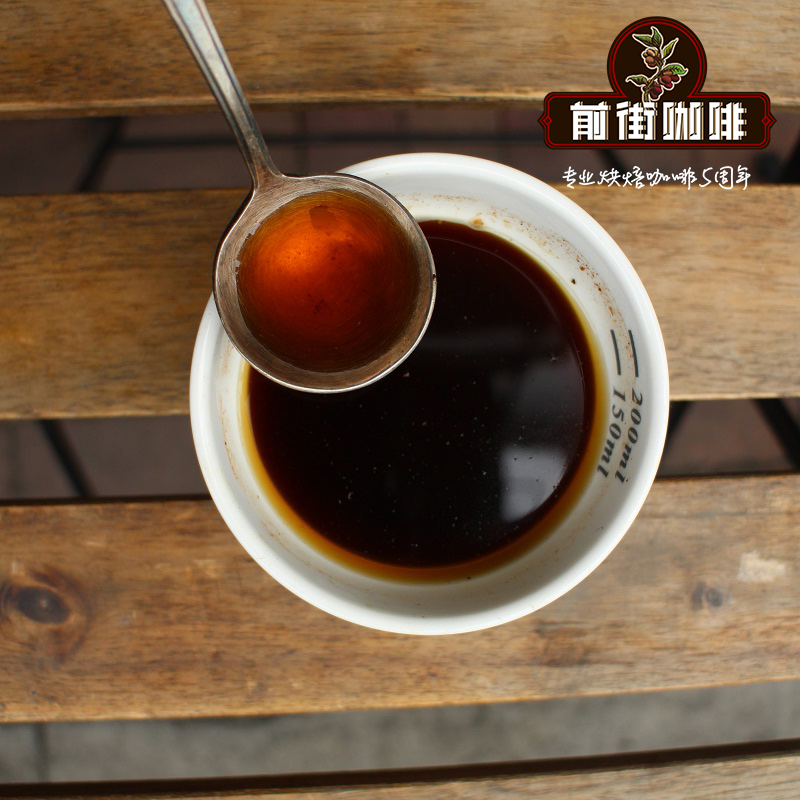How do you explain the flavor of coffee? Coffee flavor description what is the flavor of coffee beans?

Professional coffee knowledge exchange more coffee bean information please follow the coffee workshop (Wechat official account cafe_style)
Do you have any impression that every time you go to a coffee shop, when you order a cup of coffee or pick a bag of boutique coffee beans, the boss will be beaming and dancing and say a lot of technical terms to describe the flavor and taste of coffee, which often sounds beautiful and dreamy, but it is difficult to understand these descriptions of coffee? Here are some coffee adjectives commonly used by coffee people, and add some personal experience and understanding of these adjectives, I believe it can help those who want to enter the coffee world to understand or tell others how wonderful coffee is.
The taste of coffee is mainly perceived by the taste buds on the tongue.
1. Sweet
The first thing that human beings recognize is the perception of sweetness. Our desire for sweetness is really unparalleled. In coffee, there are many different sugars (often called polysaccharides or carbohydrates). The perception that we taste sugar is regarded as sweet. The sweetness of coffee is directly related to the growth maturity of the fruit when it is picked.
2. Sour
The sensory experience that acid brings on our tongues is called sour taste. When we say that coffee is too sour, we are actually describing the excessive acetic acid / acetic acid or tartaric acid produced in the coffee flavor due to overfermentation or the fruit is not yet ripe. However, our taste buds, which are particularly disgusted with the excessive acetic acid taste, are actually those taste buds that are expected to be sour in high-quality boutique coffee.
3. salty
During the coffee tasting, you have a chance to taste an illusory and truly salty taste that has nothing to do with minerals. The salty taste of coffee is actually a flaw, which is usually related to mineral contamination during the processing of raw coffee beans, especially because the beans are placed directly on the ground during processing.
4. Bitter
Our perception of bitterness is thought to have evolved to survive and to deal with all kinds of poisons in the environment. One of the alkaloids in coffee is bitter caffeine. Bitterness is actually an indispensable taste and level of coffee. In addition to caffeine, many substances produced by caramelization during baking also provide a bitter taste for coffee.
5. Fresh
In the early 1900s, a Japanese scientist established the sensory experience of freshness by separating the flavors of Kunbu seaweed. The isolated active ingredient is glutamic acid. Glutamate is the most common amino acid in food protein. The freshness of coffee is thought to be related to the yeast activity during fermentation during the processing of raw beans.
On the aroma
The "aroma" of coffee should be considered side by side with its acidity and taste. Sometimes, coffee has a floral flavor, but it can only be experienced in the aroma, not on the tongue. The fresh scent of flowers is a highly recognizable aroma in coffee. SCAA also classifies aromas, but since there are more kinds of aromas than flavors, SCAA uses four tables to list them.
SCAA divides aromas into three categories: enzyme flavor, caramel flavor, and dry distillation flavor, each of which is subdivided as shown below. Similarly, like the list of flavors, these aroma descriptions are suggestions for convenience, not restrictions. Use them as a starting point to build your own personal connections and vocabulary.
1. Enzyme flavor
It is related to the enzyme reaction of the plant itself when coffee is growing and the enzyme reaction of raw bean processing.
2. Caramel flavor
As the name implies, the aroma substance of caramel flavor is produced after caramelization at high temperature in the process of baking. This is called the Mena reaction. Common aromas include caramel, nuts, toast and grains.
3. Dry distillation flavor
This category is related to the burning of plant fibers in coffee beans. Aromas include spices, smoke and wood.
Summary:
The flavor of coffee is the sum of the taste you taste on your tongue, plus the countless aroma elements you feel in your nose.
Important Notice :
前街咖啡 FrontStreet Coffee has moved to new addredd:
FrontStreet Coffee Address: 315,Donghua East Road,GuangZhou
Tel:020 38364473
- Prev

How to describe Coffee Flavor the flavor characteristics of coffee
Professional coffee knowledge exchange more coffee bean information please pay attention to the coffee workshop (Wechat official account cafe_style) do not remember, every time you go to the coffee shop, when you order a cup of coffee, or choose a bag of boutique coffee beans, the boss will be beaming, dancing said a lot of technical terms to describe the coffee flavor, taste, often sounds beautiful and dreamy, but
- Next

What is the description of coffee flavor? How do you explain the flavor of coffee? A description of the taste of coffee
Professional coffee knowledge exchange more coffee bean information please follow the coffee workshop (Wechat official account cafe_style) if you like coffee and are interested in coffee, Qianjie Coffee is very recommended that you participate in the cup test activity, in order to explore the environment of the origin and the treatment of raw beans can have any impact on the coffee flavor. The coffee cup test originated from the coffee trade in the late 19th century.
Related
- Beginners will see the "Coffee pull flower" guide!
- What is the difference between ice blog purified milk and ordinary milk coffee?
- Why is the Philippines the largest producer of crops in Liberia?
- For coffee extraction, should the fine powder be retained?
- How does extracted espresso fill pressed powder? How much strength does it take to press the powder?
- How to make jasmine cold extract coffee? Is the jasmine + latte good?
- Will this little toy really make the coffee taste better? How does Lily Drip affect coffee extraction?
- Will the action of slapping the filter cup also affect coffee extraction?
- What's the difference between powder-to-water ratio and powder-to-liquid ratio?
- What is the Ethiopian local species? What does it have to do with Heirloom native species?

